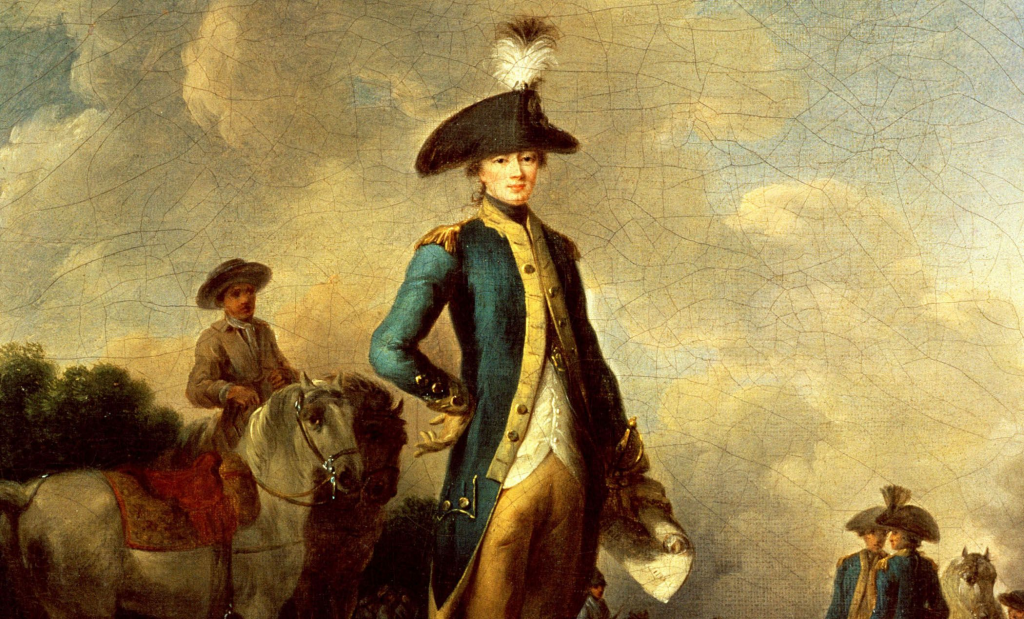In 1824, America was celebrating the vibrant spirit of independence as it approached its 50th anniversary. For many, this milestone was more than just a moment in history; it marked the passing of an era. While Monroe’s presidency remained largely unchallenged in 1820—he ran virtually unopposed in an election where only one vote was cast for his rival—it was clear that a generation of revolutionary leaders was fading into history. Enter Marquis de Lafayette, the French hero of the American Revolution, whose 1824 return to America became an emotional celebration of both the past and present.
Lafayette’s arrival was like the return of a long-lost hero. After 40 years, the 67-year-old made his way back to the United States, where his legacy was not only commemorated but deeply cherished. From New York to Washington, Lafayette’s journey became a national spectacle. Cities competed to outdo each other with grand displays, with one of the most notable being Philadelphia’s 13 arches, representing the original 13 states.

Lafayette’s visit was more than a mere celebration of a foreign dignitary; it was an opportunity to relive the glorious days of America’s struggle for independence. The public’s love for him wasn’t just admiration for a foreign military leader; it was a celebration of their own nation’s rise, an embodiment of their ideals of liberty, equality, and fraternity. Everywhere he went, Lafayette was hailed not just as a hero of France but as a “Father” of America, someone who had fought beside George Washington for freedom.
When Lafayette arrived in Washington, the scene was equally festive. In a poignant moment, he was greeted by 24 young women, each representing a state, dressed in white with blue and red scarves, the colors of both the American and French flags. These symbols spoke to the shared ideals between the two nations, ideals that had once driven Lafayette to leave his comfortable life in France and fight for a cause that was not his own.
As the years passed, however, Lafayette’s return also underscored the changing tides of America. His visit became the last significant tribute to the nation’s Founding Fathers. Monroe’s presidency, marked by the so-called “Era of Good Feelings,” saw a nostalgic yearning for the revolutionary spirit that had once shaped the United States. Lafayette’s presence reminded the American people of their origins, of the sacrifices made to build their country. Yet, as this generation of leaders like Monroe, John Marshall, and John Quincy Adams reached their twilight years, it was clear that the next generation was taking the reins.
Perhaps the most touching moments during Lafayette’s visit were spent with his old comrades, including James Monroe and John Marshall. Their reunion, after so many years, was a bittersweet acknowledgment of the passing of time. Monroe, deeply moved, welcomed Lafayette into his home, offering him a place at his table and treating him as a cherished friend. Lafayette’s journey was not just a celebration of past victories; it was also a reminder of the personal bonds forged through shared struggles for liberty.
In 1825, after completing his American tour, Lafayette prepared to return to France. His time in the U.S. had shown him the immense growth of the country he had helped liberate. But as he left, he couldn’t help but reflect on the differences between the new republic and the fate of his own country. While America was flourishing, France was on the brink of a new revolution. The ideals that Lafayette had fought for in both lands seemed to have produced different results, and it left him wondering how the same revolutionary principles had led to such contrasting outcomes.
America’s 50th birthday on July 4, 1826, was filled with pride and joy. Yet, the celebrations were tinged with sorrow as two of the nation’s founding giants, John Adams and Thomas Jefferson, passed away on the same day—July 4, 1826, the very day the nation was commemorating its birth. Their deaths were a reminder of the fleeting nature of life and the enduring legacy of the revolution they had helped shape.
Lafayette’s journey, however, was a symbol of that enduring legacy. It wasn’t just a return of a hero; it was the last echo of the revolutionary spirit that had given birth to the United States. It was a celebration of a nation that, through its trials, had grown into the symbol of liberty it is today. Lafayette’s visit not only honored the past but also reminded America of its mission to uphold the ideals of freedom and democracy.

No comments yet.